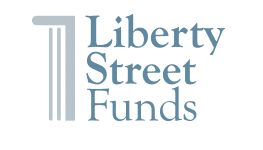By Garrett Tripp, Senior Portfolio Manager, CFA and Toby Giordano, Portfolio Manager, CFA
BRAMSHILL MULTI-STRATEGY INCOME FUND
- March 2020 liquidity event resulted in severe price dislocations throughout the fixed income markets
- The Bramshill Multi-Strategy Income Fund (the “Fund”) experienced strong net inflows of roughly $300 million from March through June
- Bramshill Investments LLC (“Bramshill”) used a portion of the inflows mentioned above to purchase investment grade (IG) securities with attractive risk adjusted yields
- Year-to-Date as of 9/30/20, Bramshill’s portfolio management has resulted in an overall improvement in the Fund’s 30 day SEC yield and yield to maturity
- This has also strengthened the credit quality and the liquidity profile of the Fund’s portfolio YTD as of 9/30/20
Since March, Bramshill took the opportunity to strengthen the portfolio’s yield, credit quality and liquidity profile by taking advantage of severe price dislocations stemming from the liquidity event. Looking at the portfolio as of September 30, 2020, the Fund represents a strong relative value proposition in the difficult-to-navigate, low interest rate fixed income environment created by Federal Reserve policy. As of September 30, 2020, the Fund’s Institutional Share (BDKNX) had 3.92% 30 day SEC yield, 5.7% yield to maturity, an effective duration of approximately 1.5 years, a correlation of 0.13 to the Bloomberg Barclays US Aggregate Index, and held around 40% IG paper.
The table below compares how the Fund was positioned before the March liquidity event and as of September 30, 2020:

BRAMSHILL AND FIXED INCOME INVESTMENT OPTIONS
As reflected in the chart below, the Fund has attractive yield and duration attributes relative to other fixed income investment options as of September 30, 2020.

BRAMSHILL PORTFOLIO REVIEW
Below, please find Bramshill’s portfolio breakdown and its views as to why they have tactically positioned the portfolio in certain sub-sectors of the structured finance marketplace.


Performance data quoted represents past performance and is no guarantee of future results. Total return figures include the reinvestment of dividends and capital gains. Current performance may be lower or higher than the performance data quoted. Investment return and principal value will fluctuate so that an investor’s shares, when redeemed, may be worth more or less than original cost. For the most recent month end per- formance, please call (800) 207-7108. Returns showing less than one year are cumulative. The gross and net operating expense ratio for the Class A, C, and Institutional Shares are 1.77%, 2.52%, and 1.52%, respectively. The contractual agreement between the Fund and the Advisor for fee waiver and/or paying for operating ex- penses is in effect until April 30, 2021. Performance results with load reflect the deduction for Class A Shares of the 4.25% maximum front end sales charge. Class C Shares are subject to a contingent deferred sales charge of 1.00% when redeemed within 12 months of purchase. Performance represented without the load would be lower if this charge was reflected. Because of ongoing market volatility, Fund performance may be subject to substantial short term changes. **ITD represents inception-to-date, 7/31/2009.
The Fund commenced investment operations on December 31, 2015, after the conversion of a limited partnership Account, Bramshill Structured Opportunities Fund Series A, L.P., which commenced opera- tions on 7/31/2009, (the “Predecessor Account”), into shares of the Fund’s Institutional Class. Information portrayed in the performance table prior to December 31, 2015 is for the Predecessor Account. The Fund’s objectives, policies, guidelines and restrictions are in all material respects equivalent to those of the Predecessor Account. The Predecessor Account was not registered under the Investment Company Act of 1940, as amended (the “1940 Act”), and therefore was not subject to certain restrictions imposed by the 1940 Act on registered investment companies and by the Internal Revenue Code of 1986 on reg- ulated investment companies. If the Predecessor Account had been registered under the 1940 Act, the Predecessor Account’s performance may have been adversely affected.
STANDARDIZED 30-DAY SEC YIELD – AS OF 9/30/20

Subsidized 30-Day SEC Yield is based on a 30-day period ending on the last day of the previous month and is computed by dividing the net investment in- come per share earned during the period by the max- imum offering price per share on the last day of the period. The subsidized yield is based on the net ex- penses of the Fund. The yield would be lower without the waivers in effect. Unsubsidized 30 Day SEC Yield is based on total expenses of the Fund.
This material must be preceded by or accompanied with a copy of the Fund’s current prospectus.
RISKS AND OTHER DISCLOSURES:
An investment in the Bramshill Multi-Strategy Income Fund is subject to risk, including the possible loss of principal amount invested and including, but not limited to, the following risks: Market Turbulence Resulting from COVID-19. The outbreak of COVID-19 has negatively affected the worldwide economy, including the U.S. The future impact of COVID-19 is currently unknown, and it may exacerbate other risks that apply to the Fund. Valuation: From time to time, the Fund will need to fair-value portfolio securities at prices that differ from third party pricing inputs. This may affect purchase price or redemption proceeds for investors who purchase or redeem Fund shares on days when the Fund is pricing or holding fair-valued securities. Such pricing differences can be significant and can occur quickly during times of market volatility.
Mortgage-backed securities: subject to prepayment risk, “extension risk” (repaid more slowly), credit risk, liquidity, and default risks. Liquidity: the Fund may not be able to sell some or all of the investments that it holds due to a lack of de- mand in the marketplace or it may only be able to sell those investments at a loss. Liquid investments may become illiquid or less liquid after purchase by the Fund, Illiquid investments may be harder to value, especially in changing markets. High Yield (“Junk”) bond: involve greater risk of default, downgrade, or price declines, can be more volatile and less liquid than investment-grade securities. Sector Focus: focus may present more risks than if broadly diversified. Fixed income/interest rate: Generally, fixed income securities decrease in value if interest rates rise, and increase in value if interest rates fall. Real estate market: property values may fall due to various economic factors. Non-diversification: focus in the securities of fewer issuers, which exposes the Fund to greater market risk than if its assets were diversified among a greater number of issuers. Collateralized Loan Obligations: subject to interest rate, credit, asset manager, legal, regulatory, limited recourse, liquidity, redemption, and reinvestment risks. Repurchase agreement: may be subject to market and credit risk. Reverse repurchase agreement: risks of leverage and counterparty risk. Leverage: The use of leverage may magnify the Fund’s gains and losses and make the Fund more volatile. LIBOR: Many financial instruments use a floating rate based on the London Interbank Offered Rate (“LIBOR”), which is expected to expire by the end of 2021. Any effects of the transition away from LIBOR could result in losses. Derivatives: derivative instruments (e.g. short sells, options, futures) involve risks different from direct investment in the underlying assets, including possible losses in excess of amount invested or any gain in portfolio positions.
The views expressed in this material reflect those of the Fund’s Sub-Advisor as of the date this is written and may not reflect its views on the date this material is first published or anytime thereafter. These views are intended to assist shareholders in understanding the Fund’s investment methodology and do not constitute investment advice. This material may contain discussions about investments that may or may not be held by the Fund. All current and future holdings are subject to risk and to change.
Agency means government mortgage-backed securities. Non-agency means private mortgage-backed securities. Cash Flow: The total amount of money being transferred into and out of a business, especially as affecting liquidity. Correlation shows the strength of a relationship between two variables. A correlation of 1 means as one variable moves up or down, the other moves in lockstep. Credit Quality is determined from the highest available credit rating from any Nationally Recognized Statistical Rating Agency (“NRSRO”), (generally S&P, Moody’s, or Fitch). The agency evaluates a bond issuer’s financial strength, or its ability to pay a bond’s principal and interest in a timely fashion. Ratings are expressed as letters ranging from ‘AAA’, which is the highest grade, to ‘D’, which is the lowest grade. In limited situations when the rating agency has not issued a formal rating, the rating agency will classify the security as nonrated. Effective Duration measures a portfolio’s sensitivity to changes in interest rates. Generally, the longer the effective duration, the greater the price change relative to interest rate movements. FICO Score: A measure of consumer credit quality that typically ranges from 300-850. Higher scores indicate more creditworthy borrowers. Investment grade (IG) is a rating that signifies a bond that presents a relatively low risk of default. Loan-to-Value ratio is an assessment of lending risk assessment that financial institutions and other lenders examine before approving a mortgage. Typically, assessments with high LTV ratios are higher risk. Prime 2.0: RMBS backed by mortgages to prime borrowers issued post-2008. Prime or “A” borrowers are generally among the best tier of borrowers, with high credit scores and/or significant financial resources. The mortgages may exceed the con- forming balance limits established by Fannie Mae and Freddie Mac. Weighted Average Life (WAL) is the average number of years for which each dollar of unpaid principal on a loan or mortgage remains outstanding. Weighted Average Price: The average of the prices of the Fund’s portfolio holdings, taking into account the respective weighting of each portfolio holding. Yield to Maturity: Rate of return anticipated on an instrument if it is held until the maturity date, expressed as an annual rate. The calculation takes into account market price, time to maturity, and coupon interest rate. It assumes that all coupons are reinvested at the same rate. This is not reflective of Fund yield.
Bloomberg Barclays Aggregate Bond Index measures the investment grade, US dollar-denominated, fixed-rate taxable bond market. The index includes Treasuries, government-related and corporate securities, mortgage-backed securities, asset-backed securities and commercial mortgage-backed securities. ICE Bank of America Merrill Lynch U.S. Cash Pay U.S. High Yield Index tracks the performance of US dollar denominated below investment grade corporate debt pub- licly issued in the US domestic market. Bloomberg Barclays US Mortgage Backed Securities Index tracks fixed-rate agency mortgage backed pass-through securities guaranteed by Ginnie Mae (GNMA), Fannie Mae (FNMA), and Freddie Mac (FHLMC). The index is constructed by grouping individual TBA-deliverable MBS pools into aggregates or generics based on program, coupon and vintage. Bloomberg Barclays U.S. Municipal Bond Index covers the USD-denominated long-term tax exempt bond market. The index has four main sectors: state and local general obligation bonds, revenue bonds, insured bonds and pre-refunded bonds. Bloomberg Barclays US Corporate Bond Index measures the investment grade, fixed-rate, taxable corporate bond market. It includes USD-denominated securities publicly issued by US and non- US industrial, utility and financial issuers. Bloomberg Barclays Baa Corporate Index measures the Baa-rated, fixed-rate, taxable corporate bond market. It includes USD denominated securities publicly issued by US and non-US industrial, utility and financial issuers. Bloomberg Barclays US Corporate High Yield Bond Index measures the USD-denominated, high yield, fixed-rate corporate bond market. Securities are classified as high yield if the middle rating of Moody’s, Fitch and S&P is Ba1/BB+/BB+ or below. Bonds from issuers with an emerging markets country of risk, based on Barclays EM country definition, are excluded. One cannot invest directly in an index.
Liberty Street Advisors, Inc. is the advisor to the Fund. Bramshill Investments LLC is the sub-advisor to the Fund.
The Fund is distributed by Foreside Fund Services, LLC.

